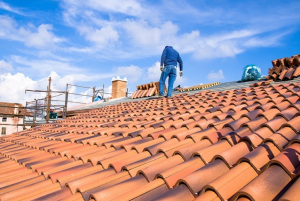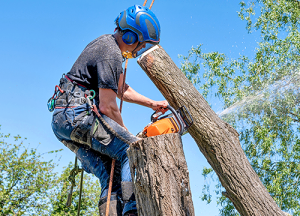No matter how much you declutter, your home will never look truly put together without smart Portland Storage Ideas. Using inexpensive, DIY and multipurpose solutions like shelving, bins and baskets is the key to organizing everything from your clothes and shoes to towels and toiletries.

From a tissue box to a mesh file, these simple add-ons keep everyday items handy. Labeling boxes also makes it easier to find items when you need them.
Under-bed storage is a smart move for extra stow space that won’t interfere with the floor’s surface or impact the look of the bedroom. It also offers easy access to items you need seasonally, such as thicker blankets in winter and swimsuits in summer.
The key is to choose the right under-bed storage bins, which should be airtight and durable enough to withstand dusty conditions. Consider a fabric option or a clear bin that allows you to keep track of contents. If you want a more stylish alternative, a cube organizer may fit the bill. These versatile units can hold anything from toys to clothing, and they’re a must-have for dorms and a popular choice of storage ideas in many homes.
If you’re shopping for new bed storage, consider a purpose-designed model that’s built into the divan base or headboard. These options fully utilize under-bed space without encroaching on room décor, and you can customize them to fit your specific needs. Look for drawers that run the full length of the bed, or half-and-half models that factor in space for bedside tables at the ends. You can even find beds with integrated handles, which look sleek and provide a seamless finish when the drawers are closed.
If you’re considering storing anything under the bed, it’s important to think through your options before stashing any belongings there, according to professional organizers. They say to avoid storing pillows, which are a magnet for dust mites, or clothes you need frequent access to, such as luggage or extra handbags. They also advise against storing hazardous materials, such as old paint cans or cleaning supplies, under the bed.
Under the Sink
What’s usually a cabinet bottom turns out to be the perfect spot for organizing bathroom cleaning supplies, kitchen gadgets, trash bags, and other small essentials. Stackable bins with clear lids are ideal for items that need to stay dry, such as detergent pods or a spare bottle of cleaner. They also come in a variety of sizes, making it easy to fit your specific needs.
Organizers designed for other areas work well under the sink, too. For example, a refrigerator wine rack holds rolls of garbage bags, and a metal wire basket is a great place for holding washcloths or sponges. Alternatively, an over-the-door towel bar is the perfect way to hang wet dish towels. A slim over-the-door bar will fit under most sink doors and won’t damage your cabinet.
A drawer organizer is another under-sink storage solution. Narrow options like the Container Store Expandable Under Sink Organizer easily glide past plumbing, while two-tier versions allow you to customize the placement of shelves and drawers. You can even use a shower caddy (think college dorm days) to keep spray bottles, paper towels or microfiber cloths, and disinfectant wipes close at hand.
Divide and conquer under-sink cabinet space by assigning tasks based on duties. In this mudroom cabinet, frequent laundry items are up front and overstocks rest in the back. A decorative pail gathers spot removers, while soap, lotion, and homemade air freshener spray go in the top drawer. A second 2-tier drawer unit holds postwash items, such as hair-grooming staples and rubbing alcohol, with taller bottles waiting on a Lazy Susan in the back.
A magnetic dry-erase board mounted inside a cabinet door makes it easy to add reminders and notes. It’s a great way to make sure no laundry tip or care request goes unnoticed. You can find a similar board at the Dollar Store, or you can build your own using a simple magnetic strip and some wood boards.
Wall Hooks
Organize everyday items with simple hooks that don’t take up much space. For example, a set of wall hooks in the entryway or mudroom is a great place to hang coats, umbrellas and hats, so you can avoid having to look for them on the floor or on furniture. These functional and decorative wall hangings are available in a variety of styles and finishes to suit your space.
You can also spruce up the back of a door with convenient over-the-door home storage hooks in this collection, which are perfect for hanging jackets and hats near the entrance or even for storing towels by the sink. The variety of options includes traditional and contemporary hook designs with single, double or triple prongs that hold a variety of weight capacities.
If you need to organize a small closet, try installing a rounded corner shelf. This versatile storage solution is ideal for tucking away items like pretty food storage containers and jars, favorite kitchenware or decorative baskets. It’s also a great place to hang aprons or dish towels for easy reach while cooking.
Keep a clean-looking bathroom by installing a decorative towel rack with a stylish design that matches your decor. These hanging racks are typically made from sturdy wood and feature hooks that make it easy to hang a hand towel, bath mat or other linen. You can also choose to install a curved metal hook that has a more modern, industrial look. These functional wall hooks are easy to install and offer a variety of weight capacities. You can also purchase a pair of accordion wall hangers to take your garage organization to the next level and suspend things like tool boxes or sporting equipment from the ceiling.
Mason Jars
Mason jars are a staple in any self-respecting country kitchen. Invented in 1858 by John Mason, these charming jars are still as popular as ever thanks to the farmhouse interior design trend and their ability to hold a variety of items from foods to DIY projects. The jars are also much more environmentally friendly than single-use plastics. The two-piece glass jar and tin lid of the mason jar can be recycled and reused many times over, cutting down on raw material and energy consumption.
Mason Jars are a great way to store food and pantry items, especially when you’re trying to maintain a healthy diet. The airtight seal makes them a perfect choice for homemade soups, stews, and casseroles. They can also be used to store pre-made salads and other healthy snacks. The jars are also a great way to store homemade yogurt kefir and milk, as well as other dairy products. The clear glass allows you to easily see the contents of your mason jars, making them an attractive option for pantry storage.
You can also use mason jars to store other household items, such as tea bags, coffee grounds, spices, and dried fruits. You can even use them to store homemade soaps and other body care products. Mason jars can also be a great way to store and display straws, unique stirring spoons, and other small pantry accessories.
If you have a lot of old mason jars lying around, you can use them as paint containers. The smaller jars will keep your paint fresher and allow you to easily see what colors you have on hand. The airtight lid will also help prevent spills and odors. You can also write the date, paint color, and room on the top of the jar to help you stay organized.








